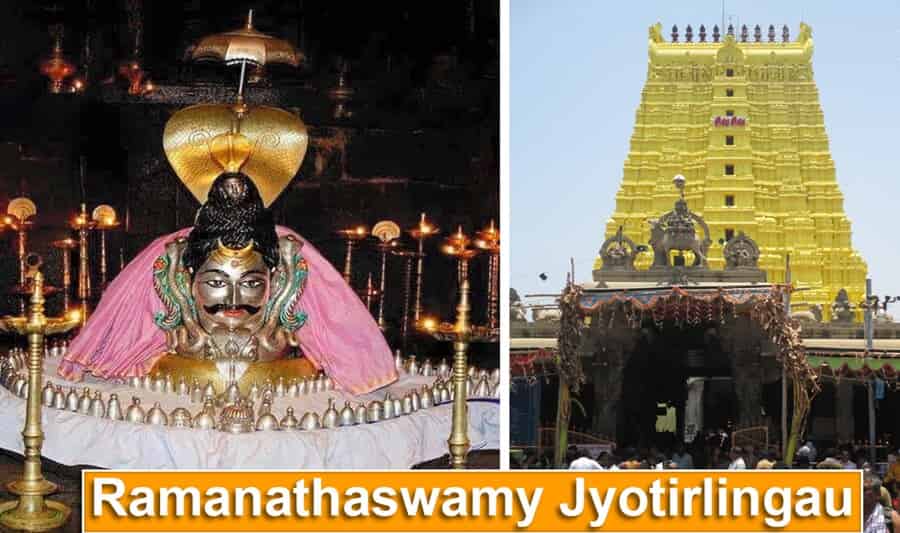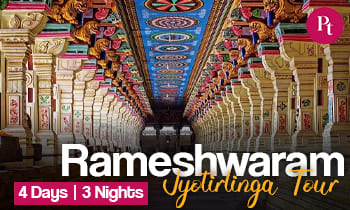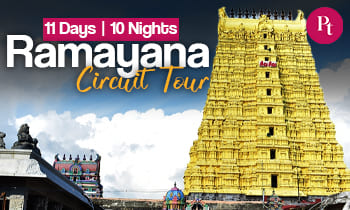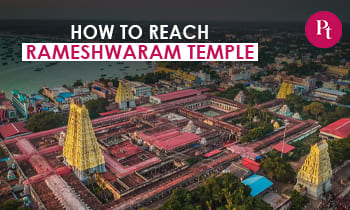The Ramanathaswamy Temple, also known as the Rameshwaram Temple, is one of the most revered and ancient Hindu temples in India. Located on Rameswaram Island in the southern part of Tamil Nadu, this temple has a rich and storied history that dates back thousands of years. In this article, we will explore the history of the Rameshwaram Temple, tracing its origins, development, and significance in the context of Hindu mythology and pilgrimage.

Ancient Origins
The history of the Rameshwaram Temple is deeply intertwined with Hindu mythology and legends. According to Hindu belief, this temple is associated with Lord Rama, one of the most revered deities in the Hindu pantheon. It is said that Lord Rama, along with his wife Sita and loyal devotee Hanuman, visited Rameswaram on their journey to Lanka to rescue Sita from the demon king Ravana.
Rameswaram is the place where Lord Rama is believed to have worshiped Lord Shiva, seeking his blessings and guidance before embarking on the epic battle against Ravana. In gratitude for Lord Shiva’s support, Lord Rama decided to establish a lingam (an abstract representation of Lord Shiva) at this location. This lingam is said to be the Swayambhu lingam, which means it was self-manifested.
The Sethu Samudram
One of the most prominent features of the Rameshwaram Temple’s history is its association with the Sethu Samudram, a mythical bridge built by Lord Rama to reach Lanka. This bridge, known as Adam’s Bridge or Rama’s Bridge, is believed to have been constructed by Lord Rama’s army of vanaras (monkey warriors) to cross the sea and reach Lanka.
The bridge, made of floating stones and coral reefs, is said to have connected Rameswaram to the island of Sri Lanka. It is a natural formation, which some Hindu devotees believe is the remnants of the bridge built by Lord Rama. The belief in the existence of this bridge has attracted pilgrims and tourists to Rameswaram for centuries.
Temple Architecture
The Rameshwaram Temple is renowned for its impressive Dravidian architecture, characterized by its towering gopurams (ornate entrance towers), intricate sculptures, and sprawling temple complex. The temple’s construction has evolved over the centuries, with various rulers and dynasties contributing to its grandeur.
The main entrance, called the East Gopuram, is the most famous and imposing structure in the temple complex. It stands at a height of 126 feet and is adorned with ornate carvings and sculptures of various deities and celestial beings. The temple’s other gopurams are equally splendid and offer a visual treat for visitors.
The temple’s sacred tank, known as Agni Theertham, is another notable feature. Devotees believe that taking a dip in the holy waters of this tank will cleanse them of their sins. The temple also houses several shrines dedicated to different deities, including Lord Rama and Lord Shiva.
Historical Significance
The Rameshwaram Temple has played a significant role in the cultural and religious history of India. It has been a revered pilgrimage site for Hindus for centuries, attracting devotees from all over the country and beyond. The temple’s association with Lord Rama and the epic Ramayana has solidified its importance in the hearts of millions of people.
Throughout history, various rulers and dynasties have contributed to the temple’s maintenance and expansion. Kings such as Raja Raja Chola and Jeyaveera Cinkaiariyan, among others, made significant donations and renovations to the temple. The temple’s historical significance is evident through inscriptions and records that have survived through the ages.
Islamic Iconoclasm
During the medieval period, India witnessed several instances of Islamic iconoclasm, where Hindu temples were often destroyed or desecrated by Muslim rulers. The Rameshwaram Temple was not immune to this, and it suffered damage during the rule of Malik Kafur, a commander of Alauddin Khilji.
However, despite these challenges, the temple continued to be a center of worship and pilgrimage. It underwent several reconstructions and renovations during different dynasties, including the Nayaks and the Marathas, who restored and expanded the temple.
British Colonial Era
The British colonial period also had an impact on the Rameshwaram Temple. The British, who ruled India for nearly two centuries, recognized the importance of this religious site and initiated efforts to maintain and preserve it.
During this time, the temple’s administration and governance underwent changes. The temple was managed by the Hindu Religious and Charitable Endowments Department, which was established to oversee the administration of Hindu temples in British India.
Recent Renovations and Developments
In recent times, the Rameshwaram Temple has undergone significant renovations and modernization. Efforts have been made to preserve its historical and architectural heritage while also improving the facilities for pilgrims and tourists.
One of the most notable developments in recent history is the restoration of the Ramanathaswamy Temple’s grand corridors, which had been in a state of disrepair for many years. The temple authorities, with the support of devotees and philanthropists, have undertaken massive renovation projects to restore the temple’s glory.
Festivals and Rituals
The Rameshwaram Temple is known for its vibrant and grand festivals and rituals. Some of the most prominent ones include:
- Maha Shivaratri: This festival, dedicated to Lord Shiva, is celebrated with great fervor. Devotees fast, perform pujas, and visit the temple to seek Lord Shiva’s blessings.
- Rama Navami: The birthday of Lord Rama is celebrated with great enthusiasm, including processions and special pujas.
- Thai Amavasai: It is considered highly auspicious to take a dip in the Agni Theertham on this day, and devotees come from far and wide to do so.
- Sethu Karai Snanam: This ritual involves taking a holy dip at the place believed to be the starting point of the mythical bridge to Lanka.
The Corridor Controversy
In 2007, the Ramanathaswamy Temple became the center of a controversy when the temple authorities proposed to demolish the ancient Raja Gopuram, the east entrance tower, to construct a new, wider corridor to facilitate the movement of devotees. This proposal sparked protests from various quarters, including heritage conservationists and traditionalists who wanted to preserve the historical and architectural significance of the temple.
After a prolonged legal battle, the Madras High Court ruled in favor of the renovation, allowing the demolition of the old structure and the construction of a new one. The controversy highlighted the delicate balance between the preservation of historical heritage and the need for modern amenities and increased visitor capacity.
Conclusion
The Rameshwaram Temple, with its rich history, religious significance, and architectural splendor, remains one of the most important pilgrimage sites for Hindus. Its association with the epic Ramayana, Lord Rama, and the mythical Sethu Samudram has made it a place of deep spiritual and cultural importance.
The temple’s history, marked by periods of renovation, Islamic iconoclasm, and colonial influence, reflects the resilience and enduring faith of the devotees who have continued to worship and maintain this sacred site. With ongoing restoration efforts and improved facilities, the Rameshwaram Temple continues to draw pilgrims and tourists from all over the world, making it a timeless symbol of devotion and cultural heritage in India.










 Call
Call WhatsApp
WhatsApp Enquiry
Enquiry
what is the message carved in the culvert at Sri Ramanathasamy temple, Rameswaram tocommemorate the visit of Swami Vivekananda. if possible please post photograph of the culvert